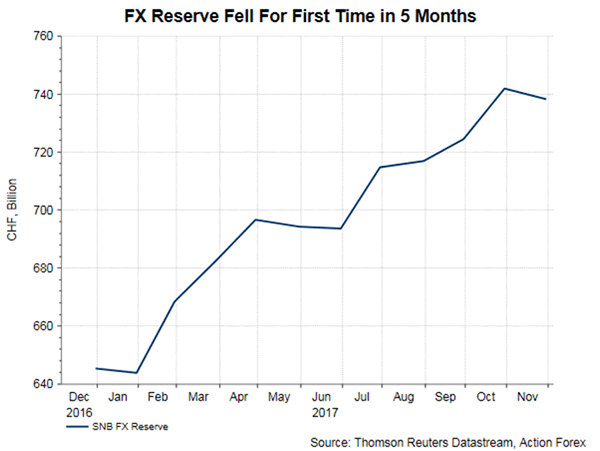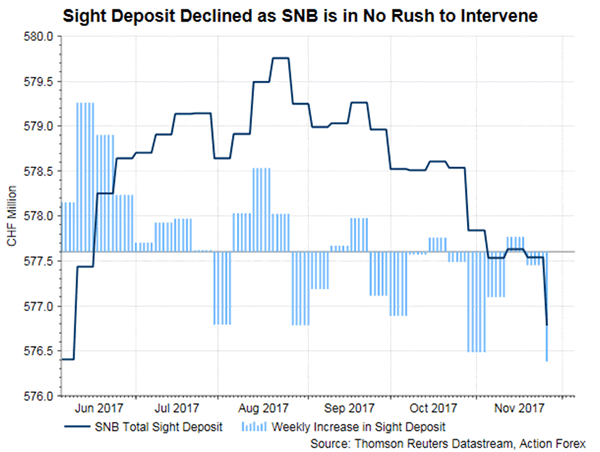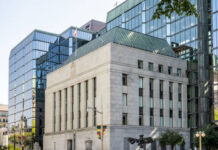SNB’s FX reserve slipped to 738.17B franc, from a record high of 741.96B franc (revised from previous estimate of 741.32B franc), in November. The drop is in contrast with consensus of an increase to 745B franc and marks the first drop since June this year. Meanwhile, the sight deposit fell to 576.78B franc in the week ended December 1. Subsequent decline from the August peak has sent sight deposit to the lowest level since June 2017. The movements of both FX reserve and sight deposit have suggested that the SNB is not in a hurry to intervene with the recent weakness in Swiss franc. Separately, the country’s unemployment rate stayed unchanged at 3% (seasonally adjusted) in November, compared with expectations of a rise to 3.1%. For the quarterly SNB meeting scheduled on December 14, we expect policymakers to maintain the status quo, i.e. keeping 3-month LIBOR target range unchanged, at between -1.25% and -0.25%, maintaining the interest rate on sight deposits with the SNB at -0.75% and reaffirming that the central bank is committed to intervene in the FX market as necessary. We believe the domestic economic developments since the September meeting have shown gradual improvements, leaving policymakers more room to wait and see.


GDP Growth
Swiss GDP growth picked up to+1.11% y/y in 3Q17, from +0.68% in 2Q17 and +0.48% in 1Q17. While it is true that the most of the growth was driven by the increase in the volatile “net acquisitions of valuables”, other indicators are underpinning the strong growth momentum. For instance, the KOF indicator jumped to a 6-year high of 11.89 in November, after drifting modestly lower in the prior month. The Markit manufacturing PMI jumped to 65.1, the highest since July 2010, in November from 62 in the prior month. The market had anticipated a modest increase to 62.5.

Inflation
Subdued inflation has remained the key reason to leave the policy rate at historical low. Headline CPI steadied at +0.8% in October and averaged at +0.5% y/y in 3Q17. SNB’s measure of 6-12 month inflation expectations had risen from +0.3% to +0.5%. Consumer expectations on inflation outlook have also improved. As the latest SECO survey suggested, consumers expectations of positive price developments has risen to 56% in the three months through October, from 45% in the three months though July. However, all measures still suggest the Swiss price levels has remained soft and far below the +2% target.
Exchange Rate
Swiss franc has depreciated -1.8% against the euro and -2.6% against the greenback. Just like what it did at the September meeting, we expect the SNB to soften its complaint over Swiss franc’s strength, but reiterate that the franc is still “overvalued” and pledge vigilance over the exchange rate movement. As Governor Thomas Jordan noted in Basel on November 23, the country’s’ high current account surplus “is not a reflection of an overly weak Swiss franc”. Rather it is driven by several reasons including statistical distortion – overstatement, structural reasons – aging population and the skew towards pharmaceuticals and merchanting industries which are relatively insensitive to exchange rate fluctuations. Jordan reiterated in his speech that “the Swiss franc remains highly valued” and “inflation is still low and production capacity is not yet fully utilized”.














